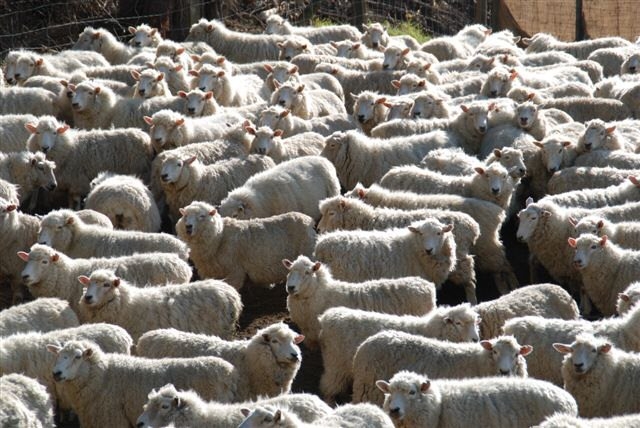
LAMB
More falls in lamb schedules have seen sobering returns for early drafts especially as these operators normally receive premiums at this time of year. Some farmers are reporting their first lamb cheques are up to $65 a head behind last year and this loss in profit will severely hit sheep farmers profits.
The processing season has got off to a slow start in the south, where cooler conditions have meant slower than normal lamb growth rates. It is still dry in eastern north island areas and many farmers will have to quit stock, after heavy lambings into a market that is trimmed to the bone, and take whatever they can get.
Poor early schedule pricing and forecast prospects, have seen a strong take up of cash deposit incentives for commitments to processors, as sheep farmers experience tight cash flow positions. The lower pricing has seen increased domestic sales reports AFFCO, as the strong currency brings better returns from local sales. Landcorp has released its financial result with a very impressive 139% lambing percentage, but on analysis even though the total profit is impressive they suffer from the same financial issues most in agriculture suffer from, rising costs, and poor return on equity. Some are suggesting profit per stock unit is also poor, reflecting the huge costs of management on such a coroprate business structure.
Meat marketers report pricing drops have stabilized, but they are waiting for consumption to respond to this more competitive environment. Lamb and sheep skins are receiving prices well back on last year, and some processors have adjusted values to reflect market trends further reducing sheep returns.
WOOL
The latest South Island auction saw prices steady at this level for the second week in a row, but these crossbred wool prices are unattractive for growers and will do little to help profitability in the sheep sector. Wools of NZ is well through it's roadshow presentations as it trys to convince farmers to invest $10 million to help market and sell wool offshore, but support at these meetings has been light at a busy time of year.
An independent report commissioned by the directors of NZ Wool Services recommends the sale of the company to Lempriere Holdings and should end a period of instability as to the future of NZ’s largest wool exporter.
BEEF
Some lifts in Bull schedules this week but prime prices remain flat as the processing numbers build, and local trade prices continue to fall. Saleyard prime steer prices are also flat driven by a lowering localtrade schedule that is 15c/kg behind last year. Volumes of cattle are just starting to reappear after a slowish spring but milder winter, although more have been processed at the works than last year.
In areas with grass, demand for store saleyard cattle is strong but the dry eastern north island areas has seen some early destocking of cattle numbers. Independent research has shown oral drench much more effective than pour ons or injectables for the control of cooperia in cattle.
DEER
More large falls in venison schedules will encourage earlier harvesting and Alliance’s new Smithfield plant in Timaru is operating at capacity.
A new updated website for Deer Industry NZ looks to drive the productivity goals that the focus farm system is highlighting to improve on farm performance and allow this industry to grow again.
A quiet start to the velvet selling season could be an indication of stability in pricing that will be positive news to specialist growers in a historically volatile pricing market.
DAIRY
Reports suggest rain in the eastern north island regions was not enough to stimulate grass growth and many southern areas are still suffering from volatile weather patterns. Seed head control is the focus at the moment with grass management, and silage harvesting, topping, combined with lengthening the rotation, are the tools used to keep pasture quality high.
A record September milk flow was produced but this early season lift is predicted to fade and the yearly forecast is for a 2-3% increase on the back of a growing average cow herd size that is now nearly 400 head.
The latest dairytrade auction index lifted but the powders fell slightly only to be compensated by a large lift for cheddar. Economists at Westpac are optimistic that these price lifts will raise the payout and have lifted their predictions to $6, but the BNZ team are refusing to budge from $5.70/kg ms.
The A2 Milk Corporation is planning to shift to the main stock exchange board as the success in Australia has given it optimism for more growth. Fonterra’s new Darfield processing plant is officially opened and reports suggest a low share sell off by farmers in the TAF capital raising scheme. The Shareholders Fund valued the units at $5.50 for opening which was at the top end of the earlier range of valuations and portrays strong value in this asset. No single investor has been allocated more than 5% of the units in the $525 million offered so disclosure rules do not apply for these investors.
The Dairy Industry has given a pass mark to the new raw milk regulations that has been updated with the growth of the industry, and the dominance of Fonterra in market share. All sides seem happy with these changes so the legislation seems to have created a balance between encouraging competition and ensuring efficency for existing players.
We welcome your comments below. If you are not already registered, please register to comment
Remember we welcome robust, respectful and insightful debate. We don't welcome abusive or defamatory comments and will de-register those repeatedly making such comments. Our current comment policy is here.